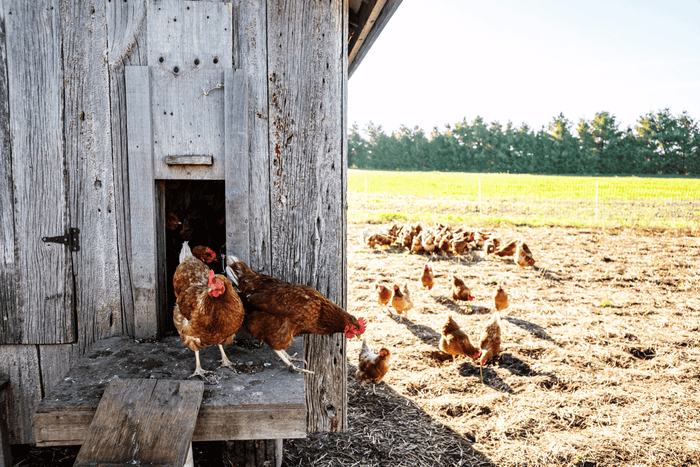How to Keep Your Chickens Cool in the Summer

Summer’s here, and while we might love the warm weather, our backyard chickens aren’t always big fans. Chickens can get pretty hot and bothered when the temperatures rise, so it’s important to help them stay cool. Here’s how you can make sure your feathered friends are comfortable and happy during those scorching summer days.
Why Chickens Struggle with Heat
Chickens don’t sweat like we do. Instead, they pant and spread their wings to cool down, which can only do so much. If they get too hot, they might stop laying eggs or even get sick from heat stress. So, it’s crucial to keep an eye on them and make sure they stay cool.
Create Shade: The Cool Retreats
Shade is your best friend when it comes to keeping chickens cool. Without it, your chickens will be baking under the hot sun. Here’s how you can create some cool spots for them:
(1) Natural Shade:
- Trees and Bushes: If you’ve got trees or large bushes, these can provide perfect spots for your chickens to escape the sun. Planting a few around the coop can make a big difference.
- Climbing Plants: Grow vines or other plants that can cover parts of your coop or run. They not only look nice but also help block the sun.
(2) Artificial Shade:
- Shade Cloth: Hang shade cloth over your coop or run. It’s easy to put up and can lower the temperature by several degrees.
- Tarps and Umbrellas: Tarps or patio umbrellas can be set up anywhere to provide instant shade. They’re easy to move around depending on where the sun is hottest.
(3) Built-In Shade:
- Extended Roofs: If you’re designing or modifying your coop, add a roof overhang. It keeps the sun off and helps cool things down inside.
- Pergolas: Build a pergola with climbing plants like ivy. It’s a beautiful and functional way to keep things cool.
Keep Them Hydrated: Water, Water, Water!
Just like us, chickens need lots of water to stay cool. Making sure they have plenty of fresh, cool water is essential. Here's what you have to ensure:
(1) Easy Access to Water:
- Multiple Waterers: Place several water stations around the coop and run, especially in shaded spots. This way, all chickens have a chance to drink.
- Clean and Fresh: Keep their water clean and change it often. Fresh water is much more appealing, especially when it’s hot.
(2) Cool Their Water:
- Add Ice: Pop some ice cubes or frozen water bottles into their waterers to keep it cool. You can also freeze water in plastic bottles and drop them into the water bowls.
- Automatic Waterers: Consider automatic waterers that provide a steady supply of fresh water.
(3) Boost with Electrolytes:
- Electrolyte Drinks: Mix electrolytes into their water to help them stay hydrated. It’s like giving them a sports drink on a hot day.
- Juicy Treats: Offer water-rich treats like watermelon or cucumber. They’re refreshing and help keep your chickens hydrated.
Cool the Coop: Better Airflow and Temperature Control
In addition to shade and water, you can make your coop cooler and more comfortable with these tips:
(1) Ventilation:
- Airflow: Make sure your coop is well-ventilated. Open windows and vents to let hot air out and cool air in. Fans can also help circulate the air.
- Position Fans: Use battery or solar-powered fans to increase airflow. Place them in a way that doesn’t blow directly on the chickens but helps move the air around.
(2) Misters and Sprinklers:
- Misting Systems: Set up a misting system around the coop. These systems spray a fine mist that cools the air as it evaporates. They’re great for lowering the temperature without soaking everything.
- Sprinklers: Use sprinklers to lightly wet the ground around the coop. This can cool down the area as the water evaporates. Just make sure it doesn’t get too muddy.
(3) Cool Surfaces:
- Cooling Pads: Place cooling pads or mats in the coop. Chickens can lie on them to cool down.
- Cool Bedding: Sand and gravel tend to stay cooler than dirt or straw. Chickens can dig into these materials to find a cool spot to rest.
Keep an Eye on Your Flock
Regularly check on your chickens during hot days. Look for signs of heat stress like panting or lethargy, and be ready to take action if needed. Move them to a cooler spot, give them fresh water, and make sure they have plenty of shade.
- Daily Water Check: Make sure their water is always fresh and cool.
- Observe Behavior: Watch how your chickens are acting. If they’re panting a lot or not moving much, they might be too hot.
Conclusion
Keeping your chickens cool in the summer doesn’t have to be complicated. With some simple steps like providing shade, keeping them hydrated, and improving airflow, you can make sure your flock stays comfortable even on the hottest days. Happy, healthy chickens are productive chickens, so a little extra effort goes a long way!


